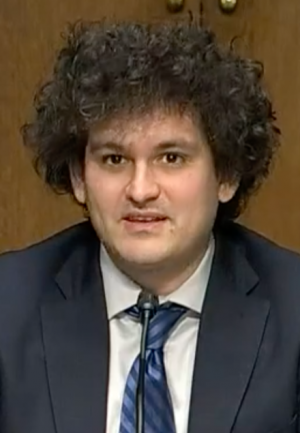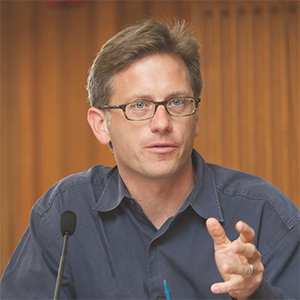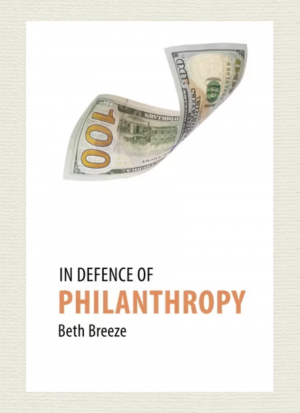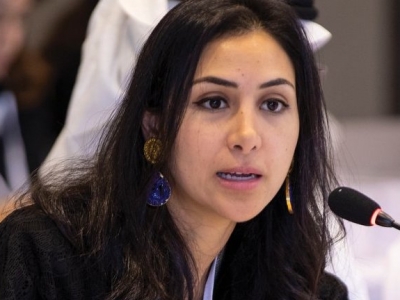 By Calum Carmichael.
By Calum Carmichael.
(The full, five-part series is downloadable as a pdf: What Can the Philanthropic Sector Take from the Downfall of Samuel Bankman-Fried and His Ties to Effective Altruism, a five-part series by Calum Carmichael (2023).)
Part 5: Questioning the ultimate effects of Effective Altruism
Introduction
Late in 2022 the bankruptcy of FTX International and the criminal charges brought against the crypto entrepreneur Samuel Bankman-Fried (SBF) enlivened and re-focused the existing criticisms and suspicions of Effective Altruism (EA) – the approach to philanthropy with which he was closely associated. To my mind, those criticisms have implications and raise questions not simply for EA but for the philanthropic sector of which it is a part. They deserve wider attention.
Part 1 of this series arranged the criticisms under seven points: two each for the philosophical foundations and analytical methods of EA, and three for its ultimate effects. Part 2 described EA: its origins, ethos, analytical methods, priorities and evolution. Part 3 focused on the two criticisms and their rejoinders for its philosophical foundations, and part 4 did the same for the two criticisms tied to its analytical methods. Here in part 5, I focus on the three criticisms tied to its ultimate effects. Before discussing each of the three, I provide several references made to it in the weeks immediately following the bankruptcy and charges.
Throughout, my goal in this series isn’t simply to present contending views on the foundations, methods and effects of EA, but rather to draw from them questions relevant to the sector as a whole. I offer a few examples of those questions, but readers will of course be able to come up with their own – such that regardless of our different ties to philanthropy, each of us can be in a position to learn or take and possibly apply something from the downfall of SBF and his affiliation with EA.
Criticism 5: Moreover, the methodology of EA – by focusing on separate, numerically-evaluated interventions – overlooks the wider behavioural, institutional or systemic conditions that might not only limit the effectiveness of the interventions but also cause or perpetuate the societal ills they seek to address.
“On some level, maybe it makes sense to ensure that your actions have the greatest possible positive impact – that your money is donated effectively to causes that improve people’s lives to the greatest degree possible…. But it’s not clear why this top-down, from-first-principles approach is the right one….” —Edward Ongweso Jr., November 2022
“…[I]n the hands of Bankman-Fried (commonly known as SBF), effective altruism was neither effective nor altruistic…. It’s an outlook that breeds a bizarre blend of elitism, insularity and apathy to root causes of problems…. This crowd seems clueless about the reality that funding research into protecting against dangerous artificial intelligence will be impotent unless we structure our society and economy to prize public safety over capital’s incentive to innovate for profit. If longtermists want to mitigate climate change, they should probably be radically reappraising an economic system that incentivizes short-sighted hyper-extractionism and perpetual growth.” Zeeshan Aleem, December 2022
The first line of criticism against the ultimate effects of EA points to its focus on separate stand-alone interventions instead of the systemic conditions that could generate or compound the problems the interventions seek to address. Critics attribute this focus to two things. The first is the bias built into the analytical methods described in part 3. This includes “observational bias” that requires collected or collectable data, “quantification bias” that expects the data and indicators to be numerical, and “instrumental bias” that privileges initiatives that are controllable. Such preconditions lead EA toward interventions that work within or apart from the social, economic and political conditions at hand.
In other words, because “EA’s metrics are best suited to detect the short-term impact of particular actions, … its tendency to discount the impact of coordinated actions can be seen as reflecting ‘measurability bias’…. [T]his bias is politically dangerous because it obscures the structural, political roots of global misery, thereby contributing to its reproduction by weakening existing political mechanisms for positive social change, rather than seek to reform them” – a point picked up by criticism 6. Moreover, those metrics divert attention from economic development being perhaps the most comprehensive anti-poverty strategy – a longer-term process that could be advanced more effectively by supporting not selective interventions in the fields of global health and nutrition, but rather watch-dog charities that promote strong institutions and human rights, or advocacy organizations that push for changes to the international trade deals and protectionist practices that harm low-income countries.
 The second explanation for why EA overlooks systemic conditions is its assumption “that the individual, not the community, class or state, is the proper object of moral theorising. There are benefits to thinking this way. If everything comes down to the marginal individual, then our ethical ambitions can be safely circumscribed; the philosopher is freed from the burden of trying to understand the mess we’re in, or of proposing an alternative vision of how things could be…. [EA doesn’t] address the deep sources of global misery … or the forces that ensure its reproduction.” Put differently, “[w]hat matters for a good human life, in which basic needs are met and individuals have some autonomy, is that institutions and practices function to the advantage of every person, now and in the future. But most existing institutions are defective in this respect. They serve small elites, exploit the environment, and keep large numbers of people in poverty and inequality….” Hence, “the most dangerous underlying assumption … of effective altruists … [is that] they take the current institutional order as given, implicitly denying that it is open to change.” The assumption that the institutional status quo is unchangeable leaves effective altruists with few alternatives beyond the strategy of supporting separate interventions that are small, brief and in the end largely ineffectual.
The second explanation for why EA overlooks systemic conditions is its assumption “that the individual, not the community, class or state, is the proper object of moral theorising. There are benefits to thinking this way. If everything comes down to the marginal individual, then our ethical ambitions can be safely circumscribed; the philosopher is freed from the burden of trying to understand the mess we’re in, or of proposing an alternative vision of how things could be…. [EA doesn’t] address the deep sources of global misery … or the forces that ensure its reproduction.” Put differently, “[w]hat matters for a good human life, in which basic needs are met and individuals have some autonomy, is that institutions and practices function to the advantage of every person, now and in the future. But most existing institutions are defective in this respect. They serve small elites, exploit the environment, and keep large numbers of people in poverty and inequality….” Hence, “the most dangerous underlying assumption … of effective altruists … [is that] they take the current institutional order as given, implicitly denying that it is open to change.” The assumption that the institutional status quo is unchangeable leaves effective altruists with few alternatives beyond the strategy of supporting separate interventions that are small, brief and in the end largely ineffectual.
Rejoinders to criticism #5
As a response to the charge that EA overlooks the systemic conditions that generate human deprivation – the critics themselves often provide defensible rationales: “efforts to restructure the normative organisation of society, … far from obeying merely causal laws, are at home in the unpredictable realm of politics”, or “institutions are very difficult to change, not only because human beings are creatures of habit, but also because there are powerful vested interests that want to keep the current order in place.” If there’s little evidence that EA can bring about institutional change, let alone change that would be beneficial, then EA will put its philanthropic resources elsewhere: a matter of triage imposed by resources being finite and more reliable interventions being available.
Moreover, the critics’ depiction of the EA community as “monolithic or focusing only on making charitable donations” subject to an “individualistic bias” is a straw characterization. “[E]ffective altruists … view charitable donations as simply one way of maximizing the amount of good that anyone can do in the world, not as the full extent of our moral obligation to others or as a ‘silver bullet’ for the problems of humanity. Philosophers, activists, entrepreneurs and others in the movement are actively seeking changes to the institutions and systemic forces that constrain human potential….[S]ocial change is about improving life as much as we can, rather than furthering any specific ideology or strategy. Moreover, not all social problems can or should be solved through collective action either (although many, of course, might be)…. [O]penness to different methods of pursuing social change … [is] crucial …. Unlike many other social movements, … [EA] aspires to be ‘cause-neutral,’ identifying what to work on according to how we can have the greatest possible impact rather than what we’re most passionate about or closest to.”

Jeff McMahan, a philosophy professor at Oxford University, writes that economists have indicated ways in which the efforts of philanthropists and effective altruists, acting through the agency of non-governmental organizations, have conflicted with and partly undermined the potentially more effective activities of other agents, particularly state representatives.
With respect to EA assuming individuals will act only as individuals – that’s simply because that’s what they are. To be sure, individuals can join with others in a common cause: in fact, that’s what effective altruists do, both through their donations, their jobs and the social movements they join. But, as Jeff McMahan, a philosophy professor at Oxford University, writes, “I am neither a community nor a state. I can determine only what I will do, not what my community or state will do. I can, of course, decide to concentrate my individual efforts on changing my state’s institutions, or indeed on trying to change global economic institutions, though the probability of my making a difference to the lives of badly off individuals may be substantially lower if I adopt this course than if I undertake more direct action, unmediated by the state…. To suppose that the only acceptable option is to work to reform global economic institutions and that it is self-indulgent to make incremental contributions to the amelioration of poverty through individual action is rather like condemning a doctor who treats the victims of a war for failing to devote his efforts instead to eliminating the root causes of war….” Indeed, such arguments can backfire: “if others … become persuaded the appropriate agents for addressing problems of global poverty are communities, classes, and states, they are likely to be quite content to leave the problems to those entities and not bother with them themselves.”
Criticism 6: By not addressing systemic conditions, EA takes on a conservative agenda that distracts from and thereby perpetuates the political, social and economic status quo and the inequalities and deprivations therein.
“[EA] isn’t premised on a strong critique of the way that money has been made. And elements of it were construed as understanding capitalism more generally as a positive force, and through a kind of consequentialist calculus. To some extent, it’s a safer landing spot for folks who want to sequester their philanthropic decisions from a broader political debate about the legitimacy of certain industries or ways of making money.” —Benjamin Soskis quoted by J. Oliver Conroy, November 2022
“It’s good that FTX’s collapse is finally making people rethink Bankman-Fried and effective altruism. But the problem with effective altruism isn’t that it’s populated by insufferable dweebs. The problem is these dweebs’ alliance with a profoundly anti-democratic project: to let rich people continue to make as much money as possible, whatever the cost to people and the planet.” —Kate Aronoff, November 2022
“…[I]n the hands of Bankman-Fried (commonly known as SBF), effective altruism was neither effective nor altruistic. Instead, he illustrated how the do-gooder ideology can serve as a … natural vehicle for bad behavior … [because] its cardinal demands do not require adherents to shun systems of exploitation or to change them…. Mainstream effective altruism displays no understanding of how modern capitalism – the system that it eagerly chooses to participate in – can explain extreme destitution in the Global South or the vulnerability of our society to pandemics. This crowd seems clueless about the reality that funding research into protecting against dangerous artificial intelligence will be impotent unless we structure our society and economy to prize public safety over capital’s incentive to innovate for profit….” Zeeshan Aleem, December 2022

Rebecca Ackermann writes in MIT Technology Review: “Despite the sci-fi sheen, effective altruism today is a conservative project, consolidating decision-making behind a technocratic belief system and a small set of individuals, potentially at the expense of local and intersectional visions for the future.”
The second line of criticism against the ultimate effects of EA is an extension of criticism 2 from part 3 and criticism 5 above. That’s to say, the philosophical foundations if EA lead it to focus on individual needs and welfare rather than things such as freedom and equality, and its analytical methods lead it to focus on separate stand-alone interventions rather than the systemic conditions. As a consequence, “effective altruism today is a conservative project” – one that “doesn’t try to understand how power works, except to better align itself with it. In this sense it leaves everything just as it is.”
Critics account for this conservative bent in three ways. The first stems from the charge that EA is “in the business of selling philanthropic indulgences for the original sin of privilege.” It therefore caters to the incentives and outlooks of the privileged folk it targets. Leaving everything just as it is “is no doubt comforting to those who enjoy the status quo – and may in part account for the movement’s success … [in attracting] privileged, ambitious millennials [who] don’t want to hear about the iniquities of the system that has shaped their worldview.” More specifically, the emphasis that many EA thought leaders place on “longtermism” appeals to wealthy funders from the tech sector who “don’t have to dirty their hands by dealing with actual living humans in need, or implicate themselves by critiquing the morally questionable systems that have allowed them to thrive. A not-yet-extant population can’t complain or criticize or interfere, which makes the future a much more pleasant sandbox in which to pursue your interests – be they AI or bioengineering – than an existing community that might push back or try to steer things for itself.”
Even between longtermist causes, one can “[c]ontrast the AI situation to climate change [which is] routinely dismissed in EA, where the problems are messy, often mundane, predominantly political, and put the very concept of economic growth under debate, and where the greatest risk is posed to poor people from the Global South. Compare also with issues like global poverty, which very few people within EA are directly affected by (and which the funders are not by definition!) and which has come to be deemed ‘lower impact’ within some of EA.” Parentheses are original. The movement is “not above motivated reasoning.”

Samuel Bankman-Fried
The close ties between EA and SBF prior to November 2022 demonstrate such reasoning. Before then, a “major part of the funding pledged to organizations belonging to the Effective Altruism (EA) ecosystem … [came] from Sam Bankman-Fried alone…. [L]ittle to no effort … [was] made to recognize and minimize the potential for conflicts of interests in the EA community, in particular those linked to the funds pledged by SBF…. Those conflicts of interests are real and painfully obvious: EA … [was] incentivized to please SBF, to adopt his views and beliefs, to work on projects that he believes are important, and to shed a positive light on his activities (EA-related or not) and his person, within the EA community and to the general public.” Parentheses are original.
The second explanation for EA’s conservative bent is that by relying on separate interventions – say, in providing health care – it reduces the capacity or willingness of governments to expand and improve public services. Separate privately-funded interventions distract “from the urgent but thorny process of institution building. And investing in these interventions may even work to undermine the consolidation of functioning institutions. The availability of free health services reduces pressure on the state to finance and provide public goods on its own. This hinders the development of effective public administration and a sustainable tax system. It lures competent professionals away from public agencies and discourages the civic participation necessary for holding the state accountable.” “The result is a disengagement of the most mobilized, discerning poor citizens from the state. These are the citizens most likely to have played a previous role in monitoring the quality of state services and advocating for improvements. Once they exit, the pressure on the government to maintain and improve services eases, and the quality of government provision is likely to fall….”
Finally, the third explanation for why EA “leaves everything just as it is” points to its failure “to confront capitalism directly” despite there being “no principled reason why effective altruists should endorse the worldview of the benevolent capitalist. Since effective altruism is committed to whatever would maximise the social good, it might for example turn out to support anti-capitalist revolution…. [However, EA thought leader William] MacAskill does not address the deep sources of global misery – international trade and finance, debt, nationalism, imperialism, racial and gender-based subordination, war, environmental degradation, corruption, exploitation of labour – or the forces that ensure its reproduction…. [C]apitalism, as always, produces the means of its own correction, and effective altruism is just the latest instance.”
Rejoinders to criticism #6

William MacAskill
There are responses to the charges that EA serves and preserves the status quo. These include the rejoinders to criticisms 2 and 5. But in addition, with respect to the claim that EA caters to the incentives of the privileged – “[i]n many ways this reflects a wider critique of philanthropy: namely that it is inherently a reflection of existing inequalities and power structures, and therefore will always be part of the problem rather than part of the solution when it comes to addressing such issues at a fundamental level. There are those within the world of philanthropy who are trying to overcome these challenges, by finding models and approaches that allow for genuine structural reform rather than simply addressing the symptoms of structural issues (perhaps through supporting social movements or embracing participatory methods which empower recipients).” Parentheses are original. Sure enough, the power of philanthropy – whether wielded by EA or not – originates from those with the means and incentives to give. Nevertheless, many fundraisers would understand and sympathize with William MacAskill’s outlook that “[i]f I can help encourage people who do have enormous resources to not buy yachts and instead put that money toward pandemic preparedness and AI safety and bed nets and animal welfare that’s just like a really good thing to do.”
In terms of undercutting the abilities and incentives for governments to step up their game – again, this is a criticism not of EA but of philanthropy in general. Sure enough, greater government funding in, say, health, education or housing may “crowd out” philanthropic spending in those areas because private donations become less needed to preserve the quality and quantity of services. But “crowding out” could occur in the opposite direction – greater private funding could reduce the pressures for more government funding. Consider, for example, the so-called “Mother Theresa effect” – the reference being to the work of the Missionaries of Charity allegedly reducing the pressures on public authorities to provide better care for the Dalits and lepers of Calcutta. Or closer to home – consider the growth since the 1980s of Food Banks in Canada and their allegedly reducing the pressure on governments to ensure the food security of their citizens. Whether affiliated with EA or not, philanthropic organizations that try to compensate for inadequate public services could end up perpetuating that inadequacy.
And in terms of kowtowing to capitalism – living and working and giving philanthropically within capitalist economies doesn’t prevent individuals from seeking ways to reduce capitalism’s imperfections or harmful effects. This could be by joining or supporting political organizations and social movements – as some effective altruists do. Or it could be by giving to the types of charitable causes endorsed by EA – as all effective altruists do. Those who criticize EA for emphasizing the latter route typically “combine ambitious accounts of how our societies and/or the world at large must be changed in order to become just, with moderate accounts of what individuals are obligated to do in response to the overwhelming injustice and suffering that continues to plague our world.” “[P]erhaps some day the world will be receptive to rational reforms of the global economic system. But until this Utopian condition prevails, there is much that a single individual can and should do.”
Sure enough, effective altruists through their giving might treat the symptoms of poverty rather than the root causes, particularly if they either don’t know those causes or aren’t able to change them. But “we should not forget that … [treating even symptoms] will mean saving lives, alleviating hunger or chronic malnutrition, eliminating parasites, providing education, helping women to control their fertility, and preserving sight.” And we shouldn’t forget that the moral significance of our efforts to improve the well-being of a finite number of people will not be diminished by there being many others that our efforts can’t reach. Besides, in the more accusatory words of an anti-capitalist effective altruist, “the harm I might do in regularly buying a chai latte rather than letting that money be used to feed someone is only different in degree from the harm a capitalist does in not directly releasing grain to the hungry. The power is of the same kind.”
Criticism 7: In its formation, methods, application and effect, EA is elitist: it risks becoming an intellectual, do-gooder playground for the privileged who ultimately benefit from – and through their philanthropy avoid substantively changing or challenging – the inequalities of the world around them.
“…the movement is insular. Its demographics skew very young, very male, very white, very educated, and very socioeconomically privileged.” —Annie Lowrey, November 2022
“Effective altruism posits that making money by (almost) any means necessary is OK because you, Elon and Zuck and SBF are so brilliant that you absolutely should have all the power implied by billions of dollars in the bank.” —David Z. Morris, November 2022
“During Bankman-Fried’s ascent, … his proximity to EA’s brand of self-sacrificing overthinkers often helped deflect the kind of scrutiny that might otherwise greet an executive who got rich quick in an unregulated offshore industry.” —Nitasha Tiku, November 2022
“Philanthropy has a simple power structure: the haves give, the have-nots receive. If organizations veer too far from the wishes of their benefactors, funders can withhold their money. Few meaningful guardrails exist to stop the rich from dictating what happens to the money hoarded in philanthropic organizations. Effective altruism was supposed to be one such protection: discouraging wasteful, suboptimal spending. But they developed that culture in a way that fails to constrain funders’ control over philanthropy and hands them new tools to organize the world around their cynical aspirations and unhinged preoccupations.” —Olúfẹ́mi O Táíwò and Joshua Stein, November 2022
The third line of criticism against the ultimate effects of EA – and the seventh criticism overall – is a culmination of the preceding six. Effective Altruism – as informed by its philosophical foundations that require impartiality and abjure emotion or relationship, as guided by its analytical methods that focus on quantification and cultivate hubris, and as defined by its selective interventions that leave intact and unquestioned the entrenched inequalities of power and resources – is a version of philanthropy that’s the product and practice and ultimately the protector of an intellectual and monied elite. It’s fundamentally undemocratic.

Jennifer Rubenstein, Associate Professor of Politics at the University of Virginia, says: “By excluding poor people and encouraging a savior complex and insularity among its members, the effective altruism movement fails to meet normative criteria of democracy and equality.”
Such concerns are voiced both outside the EA community and within it. From outside, one critic observes that “[p]aradigmatic effective altruists … are relatively well-off individuals who donate large amounts of money to organizations that aid impoverished strangers. In contrast, a poor person who devotes all her time and resources to effectively alleviating her family’s or community’s poverty is not an altruist and so cannot be a member…. Effective altruism is a movement that excludes poor people. This exclusion is compounded by the effective altruism movement’s primary strategy for attracting new members: showing how easy it is to save lives cheaply…. This analogy may be stirring, but it encourages donors to think of themselves as heroes or saviors. This orientation overlooks poor people’s central role in alleviating their own poverty and rich people’s role in contributing to and benefiting from it…. By excluding poor people and encouraging a savior complex and insularity among its members, the effective altruism movement fails to meet normative criteria of democracy and equality.”
Critics from within the community expand upon such observations. “EA is very white, very male and dominated by tech industry workers. And it is increasingly obsessed with ideas and data that reflect the class position and interests of the movement’s members rather than a desire to help actual people. In the beginning, EA was mostly about fighting global poverty. Now it’s becoming more and more about funding computer science research to forestall an artificial intelligence-provoked apocalypse. At the risk of overgeneralizing, the computer science majors have convinced each other that the best way to save the world is to do computer science research. Compared to that … global poverty is a ‘rounding error’.”

In an article in “Town & Country” magazine, Mary Childs writes that Effective Altruism picked up acolytes like Elon Musk.
Moreover, across both neartermist and longtermist causes “[t]he issues of transparency and accountability become especially problematic when dealing with tasks as huge as eradicating poverty or preventing human extinction: these are communal projects, with stakeholders numbering in the billions. We cannot be so arrogant as to assume that we, the ‘epistemically superior’ elite of wealthy white dudes, should simply impose our preferred solutions from the top down. Projects with the aim of doing the most good should be embarked upon in cooperation and consultation with the people affected.”
To account for why consultation doesn’t happen, one can’t ignore that “EA is largely reliant on the goodwill of a small number of tech billionaires, and as a result fails to question the practice of elite philanthropy as well as the ways by which these billionaires acquired their wealth…. Relying on a small number of ultra-wealthy members of the tech sector incentivises us to accept or even promote their political, philosophical, and cultural beliefs, at the expense of the rigorous critical examination EA prides itself on.”
Such “motivated reasoning” is no more evident than in the current promotion and pursuit of longtermist causes – the ones favoured by SBF. “The things … [EA leaders] push tend to be things that Silicon Valley likes, and they almost always focus on technological fixes rather than political or social ones…. These big decisions about the future of humanity should be decided by humanity. Not by just a couple of white male philosophers at Oxford funded by billionaires. It is literally the most powerful, and least representative, strata of society imposing a particular vision of the future which suits them.… I don’t think EAs – or at least the EA leadership – care very much about democracy.”
Rejoinders to criticism #7
Just as this criticism can be derived from the preceding six, so can its rejoinders.

Robert Reich writes, “Big philanthropy is a plutocratic element in democratic society.”
But in addition, the charges of EA being elitist and undemocratic aren’t unique to EA. They are tailored versions of the more sweeping charges made against “big philanthropy” (i.e., large private charitable foundations) particularly in the US. As described by Robert Reich, for example, (non-EA) big philanthropy as “a form of power that is unaccountable, low on transparency, donor directed, and by default perpetual [when exercised by a private foundation]. Big philanthropy is a plutocratic element in democratic society.” According to David Callahan, it now finances an “influence sector” comprising “think tanks, advocacy groups, litigation outfits, voter mobilization organizations and media outlets – on both the left and right – that amplify the preferences of the wealthy in public life.” And as seen by Anand Giridharadas, the “world-changing initiatives funded by the winners of market capitalism do heal the sick, enrich the poor and save lives. But even as they give back, American elites generally seek to maintain the system that causes many of the problems they try to fix – and their helpfulness is part of how they pull it off….” “For when elites assume leadership of social change, they are able to reshape what social change is – above all, … the idea that people must be helped, but only in market-friendly ways that do not upset fundamental power equations … [or] the underlying economic system that has allowed the winners to win and fostered many of the problems they seek to solve.”
To the extent that the charges against EA’s elitism are versions of those against big philanthropy, their rejoinders can be fashioned along the lines compiled by Beth Breeze. That’s to say, philanthropy has never operated on strictly democratic principles, has never tackled inequality exclusively and has always allowed donors to get something out of their giving whether in tangible or intangible forms. Admittedly, some big philanthropists may be corrupt and duplicitous. But the charges against big philanthropy are exaggerated, fail to recognize the unique role and limitations of philanthropy, and attribute the foibles and flaws of a few philanthropists or philanthropic interventions to most or all.
For example, countering the claims of big philanthropy being undemocratic Breeze points out that: civil society is key to democracy, and is funded in part by philanthropy, big and small; philanthropic interventions are episodic and relatively small-scale, in no way rivals to government programs; and the decisions and narrow constituencies of journalists, trade unions, community activists are also “undemocratic” but receive less criticism, perhaps because it’s less fun to criticize those who aren’t so wealthy.
In addition, Breeze argues that many critics – Giridharadas in particular – ignore the big philanthropists, including several from the tech sector, who, despite having benefited from the capitalist system, want to reform it. For example: the Omidyar Network (established by Pierre Morad Omidyar, the founder of eBay) seeks ways to change the current “broken” form of capitalism and alleviate the inequalities caused by unrestrained free-market ideologies; similar goals are pursued by the MacKenzie Scott Foundation (former wife of Amazon founder Jeff Bezos), the Economic Security Project and the Anti-Monopoly Fund (established by Chris Hughes, co-founder of Facebook); and the Hewlett Foundation (established by William Hewlett, co-founder of Hewlett-Packard) seeks “a new way of thinking about policy, law and the proper role of government to shift the underlying terms of debate and open up space for solutions that neoliberalism is currently choking off.” Sure enough, these initiatives could be brushed off as capitalism producing “the means of its own correction.” But they also indicate that there are members of the elite who, although having personally benefited from the status quo, want to change it.
The perspective I’m presenting as a rejoinder – that the criticisms of EA’s elitism are for the most part criticisms not of EA in particular but rather of big philanthropy and philanthropy in general – may not convince or assuage the critics from within the EA community who want and expect their brand of philanthropy to be uniquely capable of doing “the most good.” Neither may it convince commentators from outside the community who, like Callahan, want or consider EA to be “an overdue, much-needed counterweight to the typical practice of elite philanthropy, which has been very inefficient.”
Nevertheless, the perspective is consistent with the overall argument of this series: that although the bankruptcy of FTX and criminal charges against Samuel Bankman-Fried focused and amplified existing criticisms of Effective Altruism, those criticisms have implications and pose questions for philanthropy and the philanthropic sector as a whole. They deserve to be heard, reflected upon and heeded by not simply EA, but the broader sector of which it’s a part.
What can we take from the downfall of Samuel Bankman-Fried with regard to the ultimate effects of Effective Altruism?
As noted in part 2 of this series, Samuel Bankman-Fried eschewed the “more emotionally driven” neartermist causes of EA, such as global poverty and health and animal welfare, and instead positioned himself to be the major supporter of its longtermist causes. In February 2022, he created a Future Fund within the FTX Foundation that in its first year was to have disbursed between $100 million and $1 billion US “to improve humanity’s long-term prospects” through funding separate interventions that among other things would promote “the safe development of artificial intelligence” and reduce “catastrophic biorisk.” But late in 2022 – following the allegations, bankruptcies and criminal charges – the Foundation, the Fund and those plans came to an end. Are he and the reputation he built as the “world’s most generous billionaire” the exceptions that prove the general rule that the ultimate effects of EA are indeed altruistic, effective and enduring? Or is he the example that demonstrates those effects are defective on those terms? Or is he neither?
Regardless of how one answers such questions, the downfall of SBF re-activated existing criticisms and suspicions of EA’s ultimate effects. Many across the philanthropic sector might see those criticisms as being relevant only to EA with little to say about the effects of the sector as a whole. I don’t see it that way. Here, I select five areas in which the criticisms might have implications and raise questions beyond EA. Readers will no doubt be able to recognize many others.
1. Critics of EA attribute its focus on separate, short-term interventions in part to its “bias” toward having quantitative evidence of cost effectiveness. Does the philanthropic sector’s parallel quest for having measurable “impact” strengthen or weaken what it can do and do well?
What role does measurable “impact” play in the charities or nonprofits you work with or in? As a means of appeasing donors or other funders – as suggested in part 3? Or as a basis for evaluation and learning about what works and what doesn’t – at least in terms of the indicators used to define effectiveness or impact? Something else? Are there activities or opportunities – potentially beneficial ones – that are being overlooked or avoided because of the role it plays?
2. Some critics fault EA for not pursuing social transformation through institutional change. Should social transformation be the goal of philanthropy, or at least a goal? Can it be a genuine goal given that philanthropy comes primarily from those who have prospered under the status quo? If social transformation should and can be a goal, then by what initiatives or interventions could the sector advance it?
Some commentators and scholars assess the achievements of philanthropy in terms of “the transformation of society, rather than increased access to socially-beneficial goods and services – a noble goal for sure, but insufficient to lever deeper changes in the distribution of power and resources across the world.” Such transformation would fundamentally alter the institutions, laws or societal norms that are seen to perpetuate inequality. EA doesn’t pursue such systemic change because it sees little evidence that it could bring it about, or bring it about to beneficial effect. Where do you stand? Is social transformation within the reach and purview of philanthropy, or does it lie within the realm of politics? How does your stand square with your views on the expanded abilities of Canadian charities to engage in “public policy dialogue and development activities?”
3. Certain norms, expectations, routines and allocations of power and responsibility internal to a charity or nonprofit make the delivery of its services possible. But norms and protocols might also limit the effectiveness of those services and the populations they reach. How can such unintended barriers be identified and changed – and by whom?

Recent initiatives in Canada indicate that organizations and artists recognize the capacity of the arts to face social, political, ecological or moral needs of the day — and give voice to otherwise marginalized peoples. “PANL Perspectives” presents a series of articles from organizations that have been tackling social issues.
Again, think of the charities or nonprofits you work with or in – whether they deal with the arts, education, health, housing, sports, religious observance or something else. Who is missing in the populations that those organizations serve or privilege? Who is missing in their leadership? Are there barriers that limit the organization’s reach and impede its mission? As case studies of such internal change, consider these arts organizations that designed or revised their programming to widen their audience and advance the well-being of their communities.
4. Critics of EA claim that it doesn’t consult or work in solidarity with its beneficiaries, particularly when alleviating the effects of poverty – a point also raised in part 4 of this series. What are the barriers to such consultation, collaboration and accountability? Should all charitable organizations overcome them, and if so, how?
Between grantors and grantees, or between a charity and its beneficiaries, it’s not easy or straightforward to maintain an open and frank exchange of information, let alone create systems for shared decision-making and mutual accountability. With its longtermist causes, EA claims to be aware of and responsive to the needs of its beneficiaries – the silent, unborn generations that are otherwise “utterly disenfranchised.” But in terms of sharing decision-making power with present-day grantees, or soliciting advice from ultimate beneficiaries of its neartermist causes, its efforts are modest. Once more, think of the charities or nonprofits you work with or in. Are there opportunities for, and would there be benefits from, greater consultation and collaboration? If so – how could these be initiated, and by whom? To get you thinking, here are some case studies on sharing and shifting power and foundations’ efforts toward Indigenous reconciliation.
5. Critics of EA fault it for providing social services that allow governments to dodge their responsibilities to provide those services more comprehensively – often to the disadvantage of the worst off who can’t access EA’s services. Is such criticism fair?
The welfare state developed in Canada in the 1960s, encouraged by the federal government’s expansion during and after WWII, and by the inabilities of philanthropic efforts and piecemeal policies to handle the greater social needs that surfaced in the 1930s and then accompanied the post-war baby boom. However in the 1990s, given the pressures for government retrenchment and the popularity of “new public management,” governments scaled back their spending and increasingly transferred the delivery of public services to nonprofits and charities, funding them through contribution agreements. But now, after demonstrating their competence and in light of the growing demand for social services, have nonprofits and charities made it easier for governments – and businesses, for that matter – to avoid designing and funding more comprehensive programs that would better meet the health, housing, integration and reconciliation needs of their populations? Is it always better for the philanthropic sector to take on greater responsibilities?
Epilogue
Effective Altruism was the approach to philanthropy that Samuel Bankman-Fried promoted and practised. And prior to the bankruptcies and criminal charges of late 2022, the EA community had upheld him as an exemplary practitioner. In the aftermath of those events and given its ties to SBF, EA came under intense scrutiny and criticism for having possibly encouraged his actions or given them cover.
Sure enough, those criticisms were directed against EA – its philosophical foundations, analytical methods and ultimate effects. But as I see it, they have implications and raise questions that can be generalized and applied to the philanthropic sector as a whole and to our individual involvements with it – whether as donors, volunteers, employees, advisors, regulators, or beneficiaries. For that reason, the criticisms and their rejoinders deserve to be heard and reflected upon more widely. It’s for that reason I prepared this five-part series.
As noted in part 1, soon after the downfall of SBF, William MacAskill underlined the need for both he and the EA community to reflect on what should change:
Sam and FTX had a lot of goodwill – and some of that goodwill was the result of association with ideas I have spent my career promoting. If that goodwill laundered fraud, I am ashamed. As a community, too, we will need to reflect on what has happened, and how we could reduce the chance of anything like this from happening again…. I will be reflecting on this in the days and months to come, and thinking through what should change.
I hope this series provides a better understanding of Effective Altruism – one that is both critical but admiring, that recognizes not only its distinctiveness in the world of philanthropy, but also the many priorities and concerns that it holds in common with others involved in that world.
And I hope that we, mindful of what we all hold in common, will, along with the EA community, be able to reflect on how and what we should change.
Banner photo is courtesy of Kevin Chen.
Tuesday, November 14, 2023 in EA, For homepage, News & Events
Share: Twitter, Facebook




